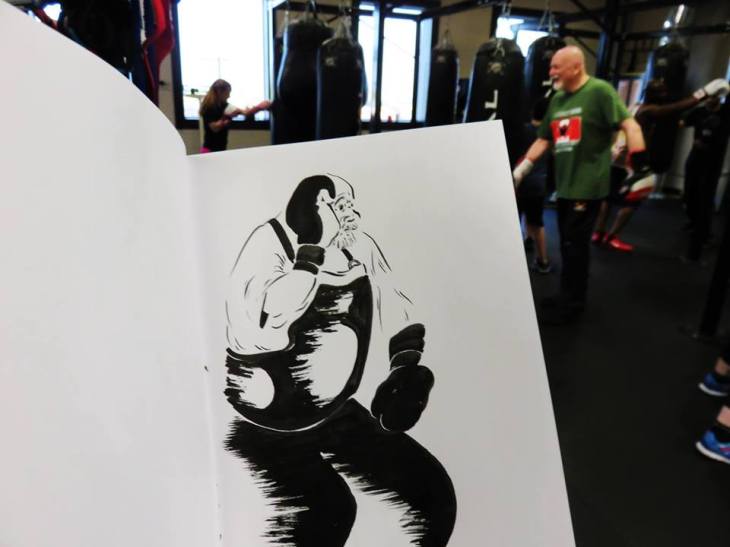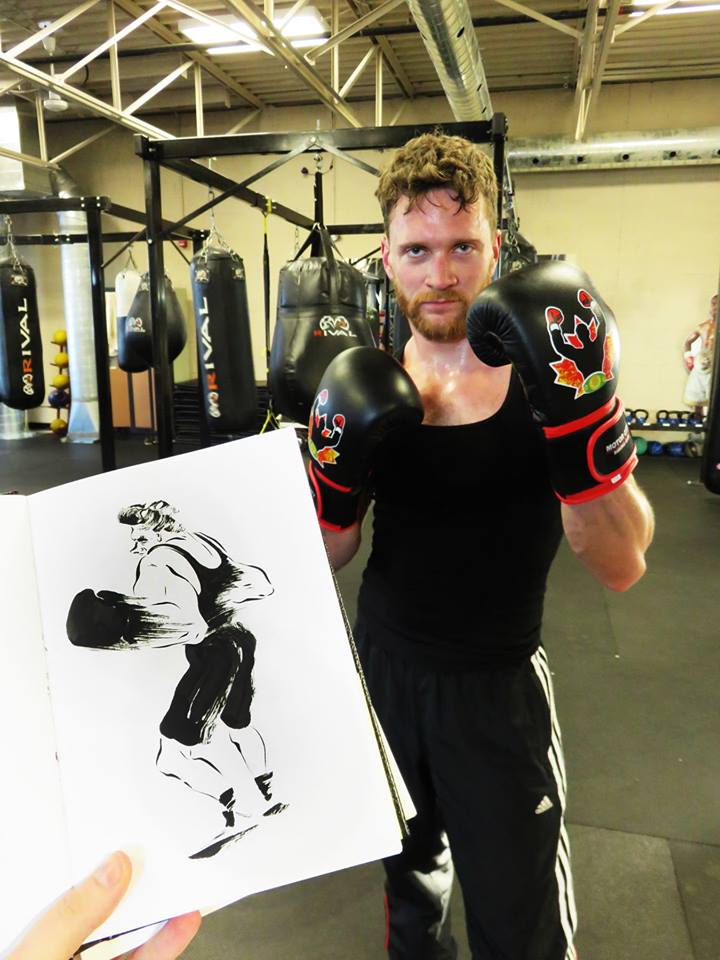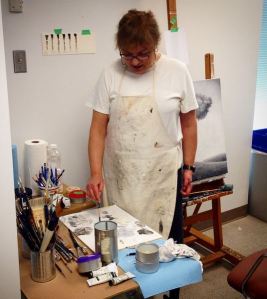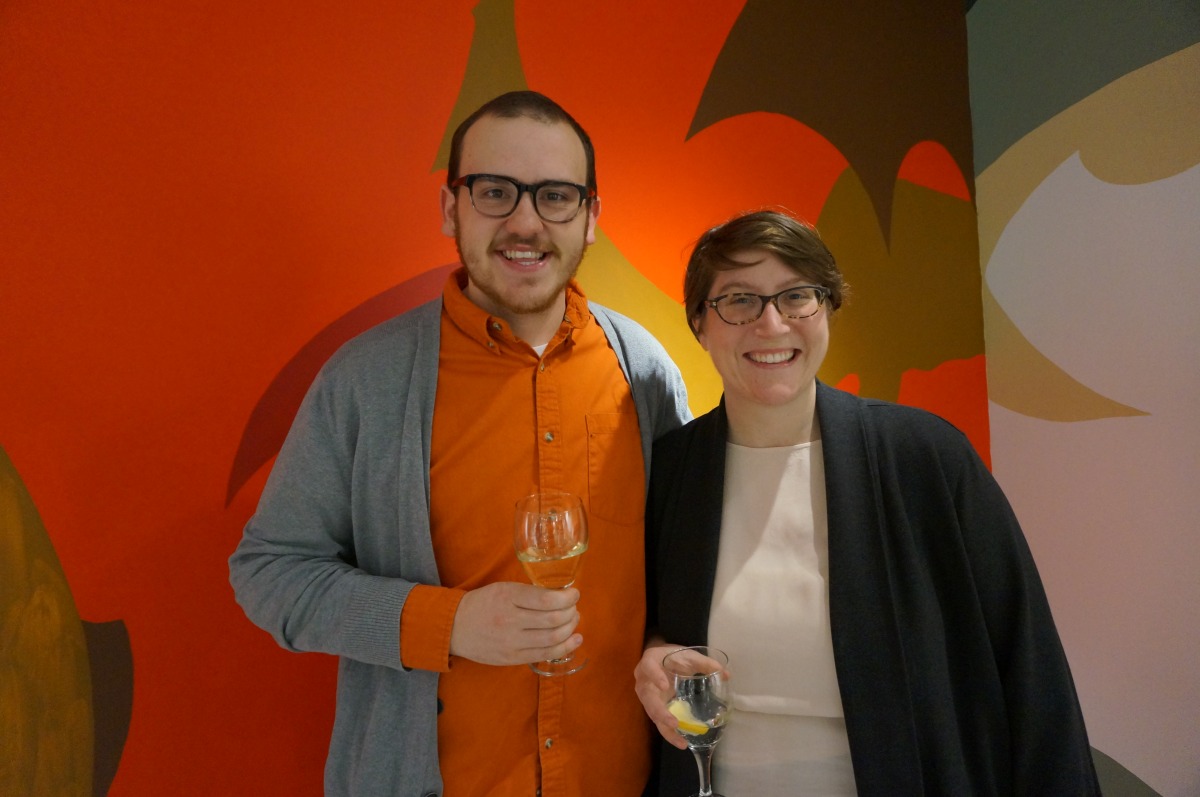Mike Drolet has is our Gallery A ArtLab artist is residence from November 3, 2015 to January 3, 2015. Prior to his artist talk on December 6, we sat down with Mike to learn more about his work and what he has been up to during his residency.
The RMG: Hi Mike, Please tell us about yourself?
Mike Drolet: Hello RMG blog readers! I am originally from Whitby, Ontario and studied Fine Art at the University of Ottawa. In 2014 I completed a Bachelor of Fine Arts degree with a minor in psychology and a specialization in sculpture.
RMG: What materials do you work with?
MD: Although I don’t want to limit myself to a specific set of materials, generally I use materials that are traditionally sought after for construction, for example, wood, metal and concrete. I am always looking into expanding and incorporating new materials for new pieces to enable different compositions.

Mike Drolet, 2015
RMG: Why were you interested in Gallery A’s Art Lab residency? What have you made while working as an artist in residence?
MD: What first got me interested in the residency was the studio space that was available to work in to work in. The lab is quite large which for my work is essential. Additionally, the Gallery A space is a massive benefit for any artist to have. As many artists may know, documentation is almost, if not as important as creating/ having artwork. Having access to Gallery A allows for the opportunity to take great photos of the new pieces created during the Art Lab and even older pieces in case you don’t have any. The Gallery A space in conjunction with the Art Lab also provides a solid foundation for an artist to show their work to the public, which as an emerging artist is invaluable.
Besides the benefits the residency provides towards my artistic practice in terms of resume and documentation building, my stay at the gallery has also posed a unique set of problems, none of which I consider to be negative in any sense. Due to the nature of my practice, I produce a lot of aromatic “pollution” (dust, vapors, sparks etc) where generally the best place to run through these processes is outside. As my time slot for the residency was during the winter months it made nearly impossible to cast concrete or wield. These obstacles have forced me to change my approach towards creating works and from what I believe resulted in a unique set of sculptures I would have not done otherwise. So I encourage artists of all disciplines to apply, accept the rules and guidelines of the gallery, and push your creative practice further in new ways.
In terms of what I’ve made during the residency, I have completed a total of seven sculptures, possibly eight as one sculpture may become a part of a larger installation of multiples. I have also had much more time to work on maquettes for future projects and past ideas. I plan on completing two more works before my end date in the space at least, that’s my goal.

Mike Drolet, 2015
RMG: Can you please tell us a bit about your exhibition on view in Gallery A?
MD: The exhibition Equipoise on view now in Gallery A is essentially a synopsis of my sculptural work that focuses on Precarious Balance. I use a minimalistic approach to comment and compose structures within the genre of abstract-expressionism. Every piece installed in the show uses its own weight to maintain the planned composition. The piece entitled Moon was actually the first piece that I had done in the theme of balance. All the other pieces in the exhibition were made just before I began my residency or during.
RMG: What inspires you? Is there a particular artist’s work that has influenced your practice?
MD: I can’t say that there is any one thing or person that has inspired me in terms of my artistic practice. My practice is more often the result of past experiences, research into various aspects of sculptural elements such as materiality and composition. Considering all these things applying them to two-dimensional drawings and realizing them in the third-dimension is where my ideas usually synthesize.
That being said, Chris Burden and his show “Extreme Measures” was definitely something that had some influence towards how I thought about composition and sculpture I would say. I still really enjoy his bridge works and his piece “Beam Drop, 2008.”

Mike Drolet, 2015
















